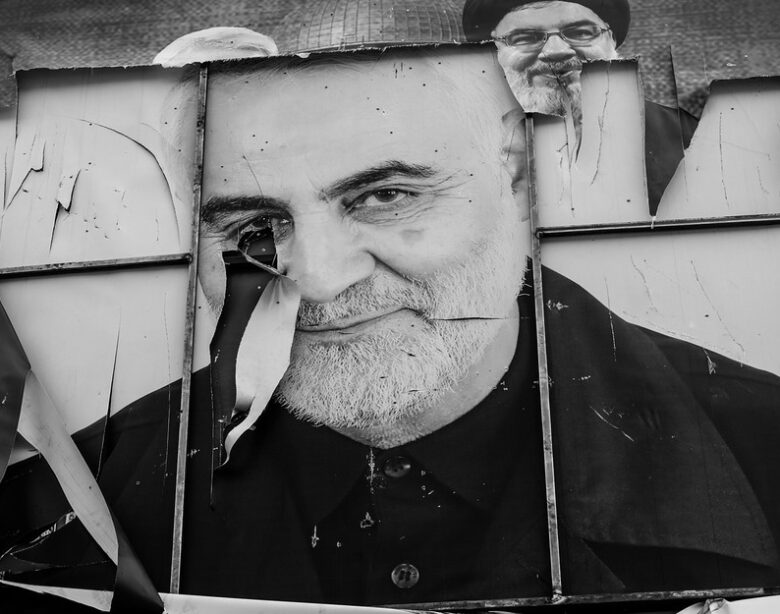[ad_1]
Iran’s Axis of Resistance It is an informal coalition of anti-Western and anti-Israeli armed forces. Already facing a bad year But the loss of Syrian dictator Bashar al-Assad Might be able to handle knockouts.
Syria was both a staging ground and a proof of concept for the Axis powers. Assad owes his throne to his army. This helped him kill hundreds of thousands of civilians in the civil war that began in 2011. Unlike other members of the Axis powers, Assad is not a member of Islam, and he has real differences with Hamas. (the only Sunni member of the Axis) and the Yemeni Houthis. But apart from Iran Syria is also the only UN member state considered to be part of the Axis powers. And the territory of Syria is extremely important. Iran sends supplies through Syria to Hezbollah in neighboring Lebanon. and use it to bring together transnational armed groups. It is a mostly Shia army made up of armed groups from Afghanistan, Pakistan, Iraq and elsewhere.
The Axis powers have exerted pressure before, but never like this. In 2020, U.S. drones One of them killed Qassem Suleimani, commander of the Islamic Revolutionary Guard Corps’ expeditionary force and fabled leader of the Axis powers. Iran’s regional project was a failure at the time. Soleimani’s daughter Zenab delivered a rousing speech at her father’s funeral in Tehran. Promised that three of her honorary “uncles” would avenge her father’s death: Hezbollah leader Hassan Nasrallah, Hamas leader Ismail Haniyeh and As. Saad within the past four months The three Avengers were transported from the scene. Haniyah and Nasrallah were killed by Israel. And Assad is now a refugee in Moscow.
When Assad leaves Iran faces liquidation Why spend tens of billions of dollars and thousands of lives on a regime that collapses like a house of cards? Ayatollah Ali Khamenei, Supreme Leader of Iran gave a defiant speech last Wednesday It confirmed that the Axis powers were alive and well. He spoke of the fall of Assad as He called it a “American-Zionist plan” and said Tehran would help his regime if it could. This is a significant acknowledgment of the weak capabilities of his own regime. He called on his supporters. “Not indifferent” and pledged that “resistance” will continue to dislodge the United States. leave this region and “Root out Zionism by the grace of God.” But Khamenei’s bravado has fooled no one. Israel had already attacked the Axis powers. And Syria’s Turkish-backed Sunni Islamist group has completed the task. Khamenei has barely been able to respond to Israel’s repeated attacks on Gaza, Lebanon, Syria and even Iran itself. His policies failed.
The end of the Axis powers was good news. Iran-backed militias have brought little misery to the region. They undermine the sovereignty of many Arab countries. Increased religious hatred and sectarianism. Iran’s rulers have previously claimed to offer an exportable Islamist model. which may compete with both capitalism and communism. But then they go on to rule their own country as a corrupt and oppressive oligarchy, feeding lies to such hypocrites. All that was left to unite the Axis powers was the pursuit of Israel’s destruction. As a result, instead of creating a better life for their voters, they sought the destruction of Israel. Axis members turned their countries into Iran’s beachheads amid shadow conflicts with the United States and Israel.
Iranian leaders often boast that they control four Arab capitals (Damascus, Beirut, Sana’a and Baghdad). Last week the Axis lost Damascus. Others have also begun to break free from Tehran’s clutches. In Beirut, Hezbollah. Many field commanders were lost in the war with Israel. And Lebanese are losing patience with the armed forces. In Baghdad, the government of Prime Minister Mohammed al-Sudani is backed by a number of Iran-backed militias. But it does not appear to feel too constrained by Iranian interests. Iraq didn’t lift a finger last week to help Assad. and still maintain close relations With Western allies in the region such as Jordan, Saudi Arabia and Egypt, the Houthi-led state in Yemen remains deeply anti-Israeli and anti-Semitic. and continues to threaten international shipping in the Red Sea. But it is a local movement with more ties to Tehran than any other member. of the Axis powers all along Finally there is the latest report. recommend Hamas has agreed to cede future administration of the Gaza Strip to a committee that will include the rival Gaza Strip and Fatah. It signaled just over a year after the Israeli-led massacre that the Gaza Strip experienced its latest firestorm. Hamas, too, is on the back foot.
But the most important capital that would be affected by the fall of the Axis powers was Tehran. Khamenei’s regional policy should make the United States and Israel is in danger. It seems to have done the opposite over the past 14 months. Israel attacked the Axis Powers and attacked Iranian territory for the first time. (And the second time.) Tehran never even responded to the Israeli attack on October 26th. knowing that there are few satisfactory options for doing so. Its bluff is called Iran now in a corner. And to make matters worse, Donald Trump will return to the White House next month. which may lead to policy “Maximum pressure” on Iran returned with him.
Khamenei’s 35-year rule of Iran has left his country impoverished and isolated. At the same time, it has led to more and more political repression. His hardline factions remain politically sidelined for the time being. As both the president and conservative speakers in Congress have made clear, Iran’s priorities need to be economic development and deals with the West. Some believe that the collapse of the Axis might persuade Iran to dive head first into a nuclear bomb. But decision-makers in Tehran know this is likely to receive a strong response from the United States and Israel, and they may want to use diplomatic opportunities to reach an agreement with the new American administration.
No one will miss Axis of Resistance, but the history of the Middle East has shown that the death of a bad actor is not enough to produce a better one. The Axis powers would leave a vacuum that other offensive powers could fill. What affected countries will need to avoid such an outcome is a combination of foreign direct investment and a willingness to mediate their internal differences. The two are linked: Disputes are much easier to resolve when all parties have a reasonable chance to prosper.
Popular demand for this agenda In 2019, the people of both Iraq and Lebanon rose up with two main demands: to end the sectarian power-sharing system that empowered the country’s Axis armed forces; these and to create effective public services The most obvious symbol of both movements is the flag of their respective countries. These were uprisings against the Axis powers. in which Iraqis and Lebanese tried to prioritize their countries over Axis plans to wreak havoc in revolution in the region.
Suppose that after the fall of the Axis Powers The region emerged as one of the most stable and cohesive nation-states that pursued economic development rather than war. The dream of democracy that sparked the Arab Spring of 2011 remains distant, but Iran’s revolutionary project for the region is finally coming to an end.
[ad_2]
Source link



